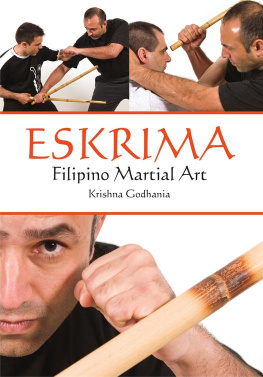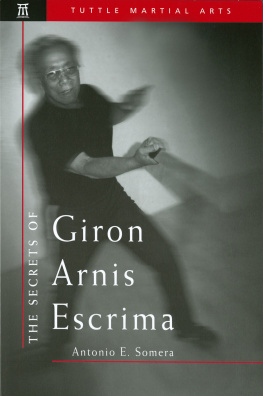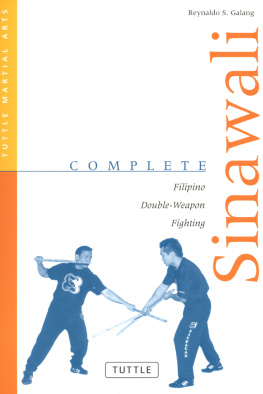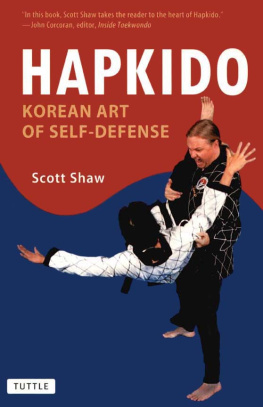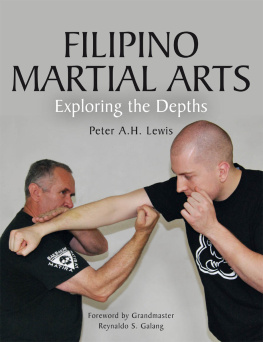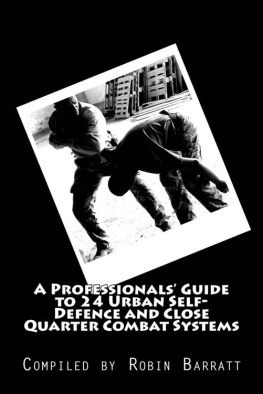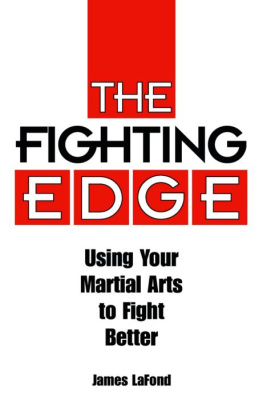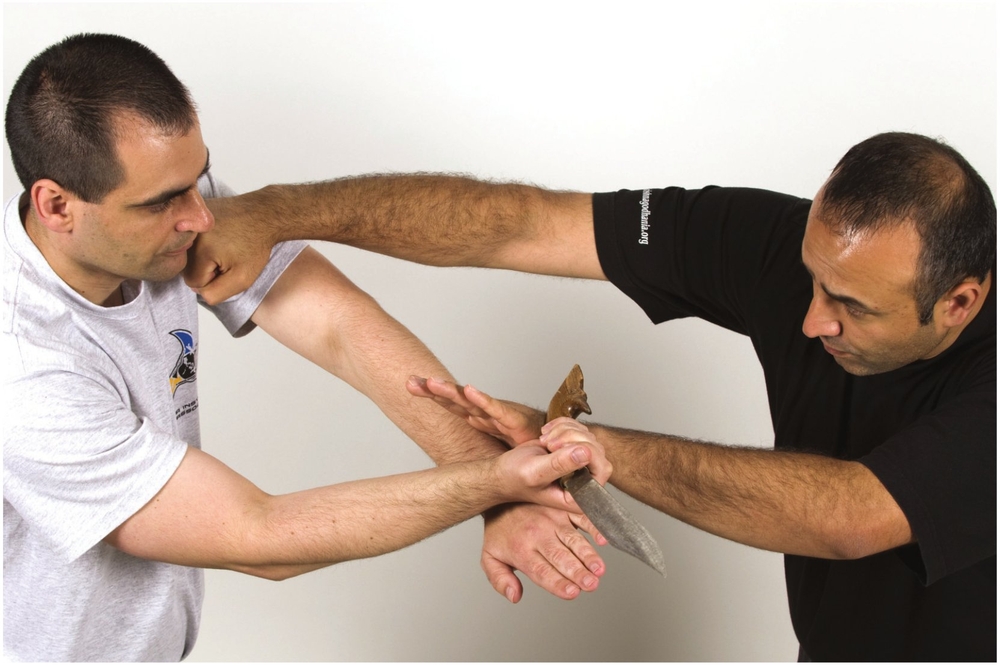First published in 2010 by The Crowood Press Ltd, Ramsbury, Marlborough, Wiltshire, SN8 2HR
www.crowood.com
This e-book edition first published in 2012
Krishna Godhania 2010
All rights reserved. This e-book is copyright material and must not be copied, reproduced, transferred, distributed, leased, licensed or publicly performed or used in any way except as specifically permitted in writing by the publishers, as allowed under the terms and conditions under which it was purchased or as strictly permitted by applicable copyright law. Any unauthorised distribution or use of this text may be a direct infringement of the authors and publishers rights, and those responsible may be liable in law accordingly.
ISBN 978 1 84797 469 3
Photographic Acknowledgements:
The instructional photographs were taken by Scott Benzie, the cover photographs were taken by Juan Antonio Tabernero (aka Kometa), and the photographs taken in the Philippines were supplied by Noel Perkins.
Disclaimer
Please note that the author and the publisher of this book are not responsible in any manner whatsoever for any loss, damage, injury or adverse outcome of any kind that may result from practising, or applying, the principles, ideas, techniques and/or following the instructions/information described in this publication. Since the physical activities described in this book may be too strenuous in nature for some readers to engage in safely, it is essential that a doctor be consulted before undertaking training.
To my parents, Keshav and Liri Godhania, for encouraging me to study the martial arts and for the sacrifices they made to give me a good life.
To my Eskrima teacher, Grandmaster Abner Pasa, for sharing his personal art, and for the countless hours of happiness, joy and laughter gained from playing Eskrima.
To my wife Deepa, without whose encouragement and support this book would never have seen completion.
To my students: the future of the art your support continues to help keep it alive.
First of all, I would like to thank Sifu Shaun Rawcliffe (Wing Chun Kung Fu) for originally recommending me to Crowood.
Sincere appreciation to my long-time training partner Graham Lawrence, for his invaluable suggestions regarding content, and for editing the manuscript into a more reader-friendly form.
Many thanks to my Eskrima teacher Abner Pasa, for contributing the superb chapter on Eskrima philosophy.
Respect to my students, Darren Moore, Dion Trigg and Michelle Trigg for their technical expertise and assistance with the photographic sequences.
Salutations to Scott Benzie for the excellent instructional photographs that form the bulk of this book, and salutations to Juan Antonio Tabernero (aka Kometa) for the superb cover shots.
Thank you to my student Noel Perkins for supplying copies of photographs taken in the Philippines.
I also have to thank Eskrimador and hugely talented artist Orville Visitacion for the superb life-like illustrations in .
And to Rafael Kayanan for the wonderful body outlines used to construct the template diagrams.
Finally, sincere appreciation for the excellent template diagrams that were constructed by student and friend Francisco Paco Gomez.
The purpose of this book is to give readers a detailed insight into the Filipino martial art of Eskrima: I hope it inspires them to contact a qualified instructor (guro); and for those already actively involved in the practice of the art, I hope it will inspire them to look in more detail at the system they use, and to further research it. The training methodology, principles and concepts are predominantly from the Warriors Eskrima System, founded by Grandmaster Abner Pasa.
As the lineage holder of this system, I have continued to evolve it by introducing new training methods, and by organizing the original techniques and training drills into a progressive and structured curriculum.
The Filipino martial arts are highly evolved and massive in scope, and to go into detail in each area of Eskrima is beyond the scope of this book. However, this is by far the most complete and detailed work on the subject that has been published to date in the UK.
The bulk of the book goes into detail concerning the techniques, drills, training principles and concepts in the following areas: single stick, knife defence, empty hands, double stick, stick and dagger, and staff, with supplementary chapters on flexible weapons, projectiles and training with equipment.
The history chapter contains extremely rare and previously unpublished photos of Eskrima Masters and Grandmasters; and the chapter on philosophy sheds light on a relatively unknown aspect of Eskrima.
Finally, the chapter on self-defence and the law discusses important considerations for the martial artist with regard to the use of reasonable force. Unfortunately, battles dont always end on the street, and often continue into the courtroom, therefore knowledge of the law must be a part of a martial artists education.
Krishna Godhania
May 2009
Warwick, England.
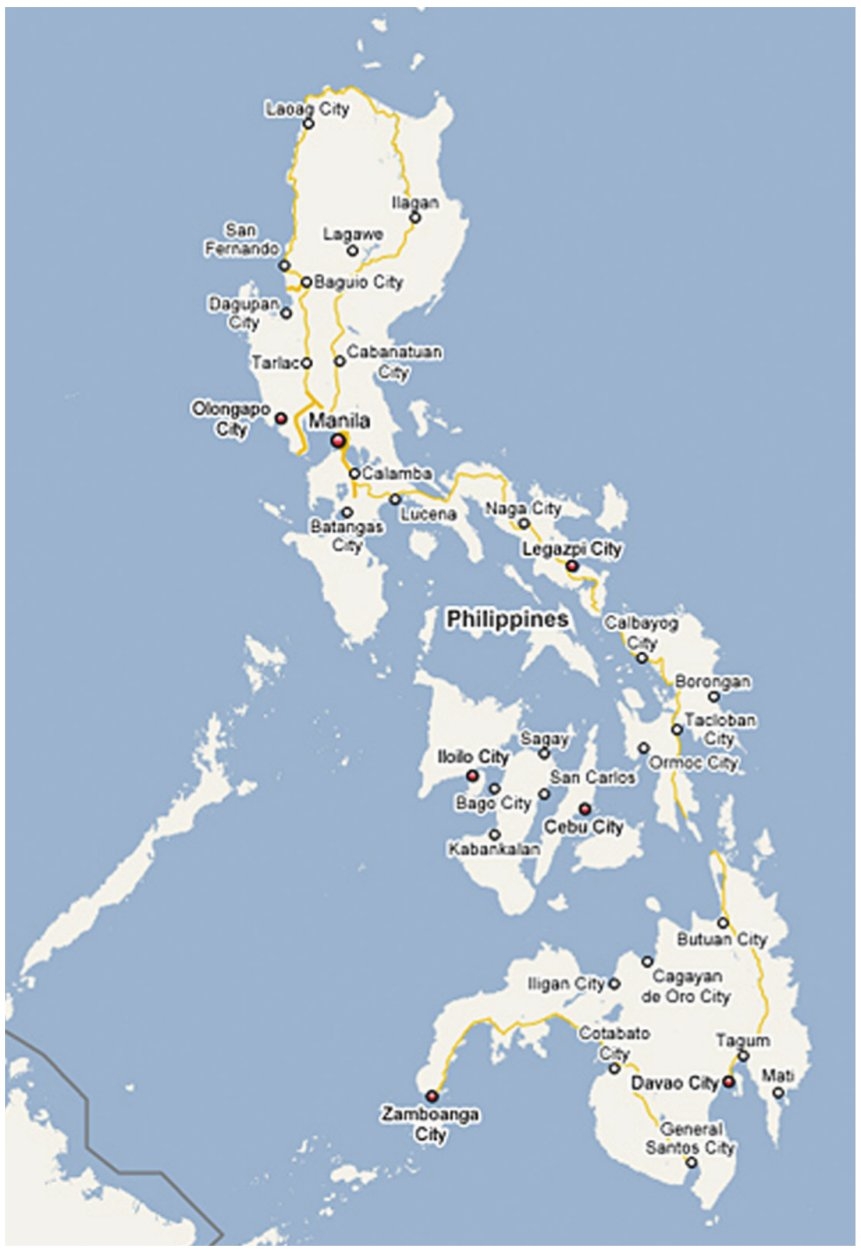
Map of the Philippines.

The Battle of Mactan (1521).
What is the early history of Eskrima? The answer is that nobody knows for sure. Unfortunately, there are no written treatises on Eskrima before the later part of the twentieth century, and subsequently the history has largely been handed down through oral tradition.
The region known as Visayas (Central Philippines), and in particular Cebu, is widely regarded as the cradle of Eskrima. It was in nearby Mactan Island that the local chieftain Lapu Lapu and his men repelled the Spanish conquistadors in 1521. Ferdinand Magellan, the Portuguese navigator who led the expedition on behalf of the King of Spain, paid with his life at the battle of Mactan. It is believed that Lapu Lapus men fought with spears, swords and sharpened sticks, and this is the first reference to the existence of the ancient art of Eskrima. The painting (see p. ) shows Lapu Lapu about to apply the finishing stroke to Magellan.
Before the coming of the Spaniards, Eskrima was most likely an art of war taught to warriors to use in the constant tribal wars of that period. Being an art of war, each tribe would evolve its own distinctive techniques based on the type of weapon it preferred, and the environment it lived in. Understandably, each tribe would jealously guard its techniques, strategies and tactics. During this period Eskrima could be classified as a tribal fighting art.
Eventually the Spanish conquered the Philippines, largely through the church, and this Spanish colonization radically changed the practice of Eskrima. To minimize future revolts the warrior class was outlawed, as was the carrying of bladed weapons. The Eskrima Maestros (Masters) were forced to take their styles underground, and this involved training with rattan sticks instead of swords, and teaching private pupils who were either members of their own families, or select students who had specifically sought out the Masters.
The techniques of the various styles and systems prevalent during the 16001800s would have continued to be closely guarded, as these were centuries of personal duels. Also,

